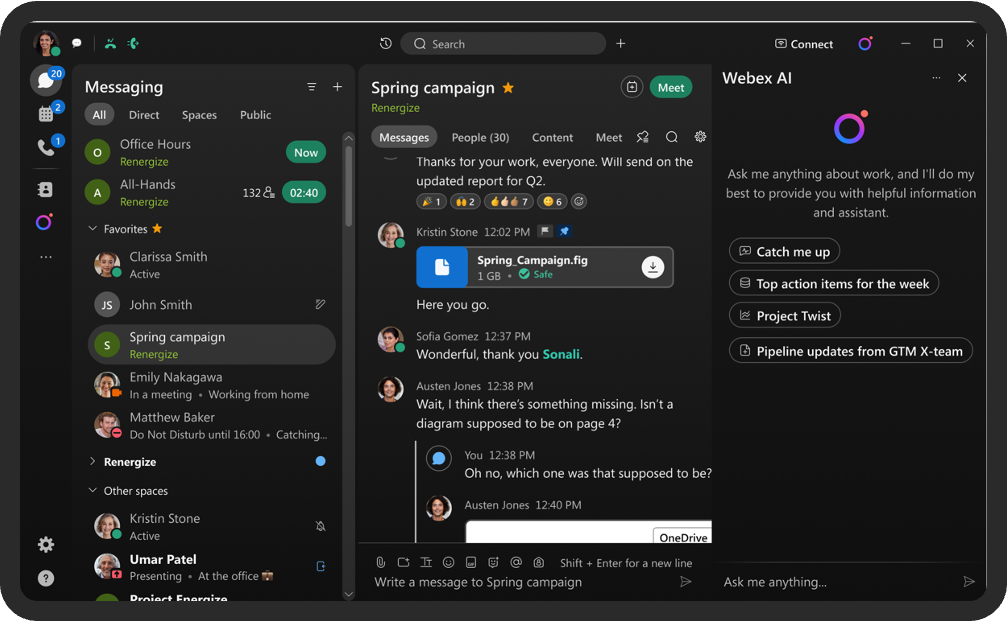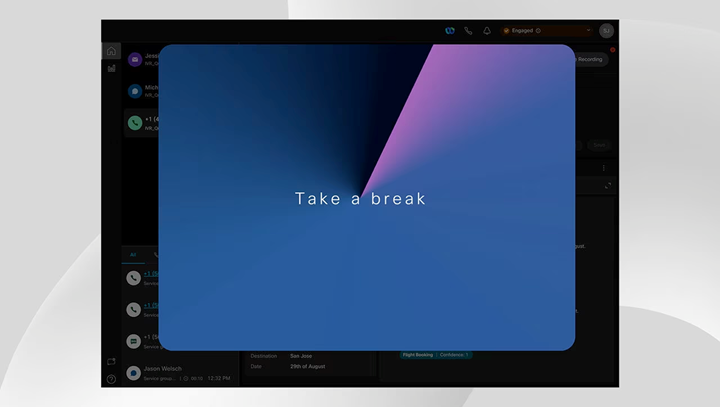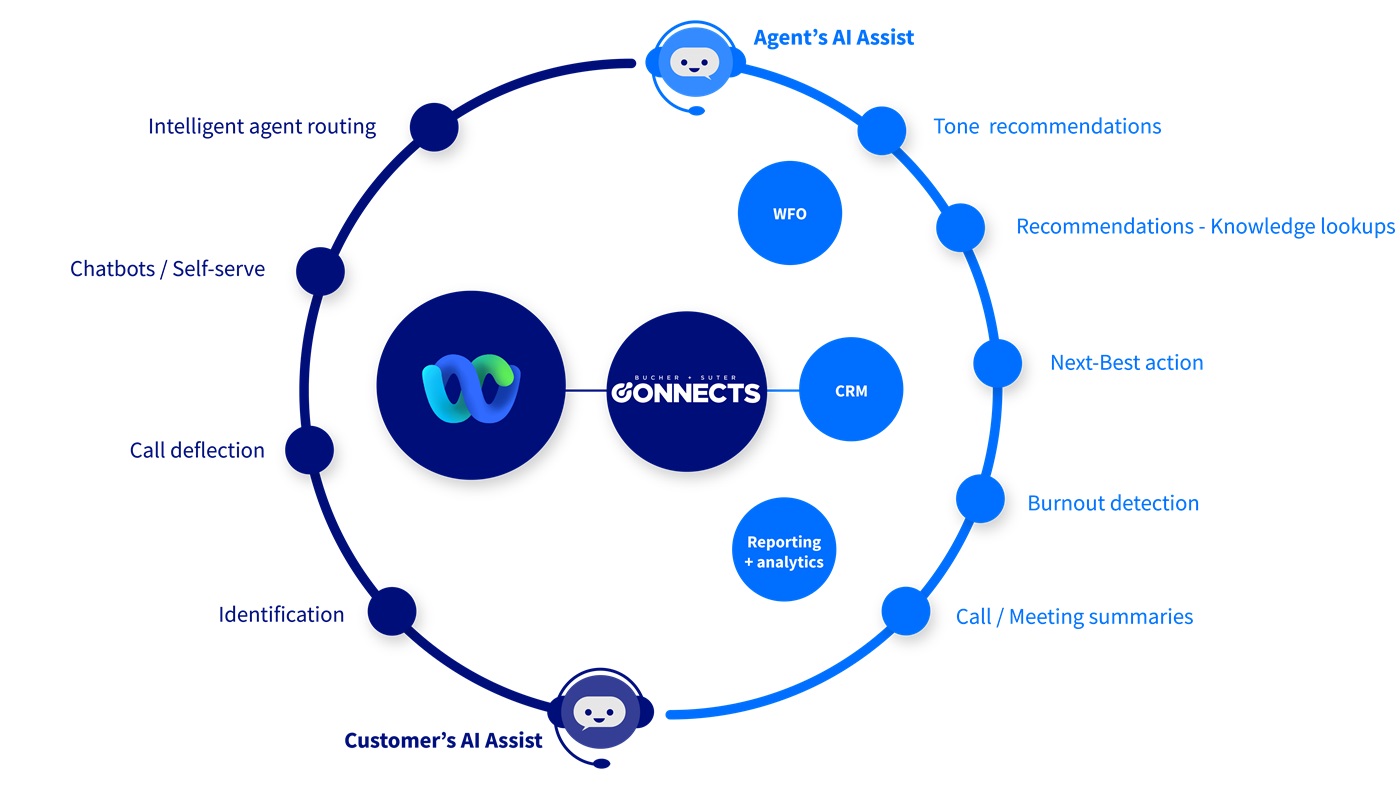Not long ago, the remarkable explosion in AI use cases had many customer support agents looking over their shoulders. Many in the contact center wondered when, not if, new AIs will automate agents entirely. Today, many of those presentiments are coming to bear, but not quite the way everyone feared.
Yes, AI is already automating many low-skill, low-touch customer service jobs. Why would a budget-strapped director employ ten agents to send canned responses when one AI can do it much cheaper (and better)? But the prevailing trend appears to be less centered on replacing agents outright and more on AI as an enhancement of the agent experience.
For evidence, look no further than the proliferation of AI products designed to do just that. Cisco Webex recently added new AI-powered features to its Webex Contact Center solution (which, in its enterprise version, as well as in Cisco’s on-prem solutions, UCCE and PCCE, already includes Agent Answers). These include suggested responses, conversation summaries, and low-code virtual agent capabilities. We’ve seen other AI products gaining traction as well, including Salesforce Recommendations and Next Best Answer, alongside Microsoft Copilot.

All of these solutions are designed not to replace skilled agents but to help them work smarter and faster in the context and flow of their day-to-day work. Given the magnitude and complexity of this daily onslaught, agents are going to need every bit of help they can get.
Agent SOS: high call volumes and increasingly complexity
Even with AI-powered self-service and chatbots in place to automate some cases, human agents are still swamped. After all, they’re the ones on the other side of the “unusually high call volume” refrain, frantically switching between multiple systems and tools to handle complex customer inquiries (and manage the many swings in customer sentiment).
Consequently, agent turnover still nags at contact center leaders (and nags, and nags). Among agents working in self-described high-stress environments, 53% say they’re “not likely to stay at their organization within the next six months” (CMP Research, 2023-2024 Customer Contact Executive Benchmarking Report). It’s not exactly an environment in which new agents tend to find their footing, either, so the cycle of high turnover perpetuates itself.
Help on the way: new innovations in AI-powered Agent Assistance
Often, what’s missing is intuitive, proactive, and contextually relevant help, right when agents need it most. That is, intelligent tools that go beyond spitting out generic responses and running the same old database searches.
Here’s where AI has the potential to deliver tremendous efficiency gains. A proliferation of use cases shed some light on what the AI-first contact center might actually look like:
| Definition | Example | |
| Document processing and extraction | E.g., text extraction, key phrase recognition, and image analysis that can be used to automate tasks (processing insurance claims, for example, or reviewing contracts). | Scanning a customer’s insurance policy documents to provide the agent with the information they need to provide a personalized answer. |
| Semantic AI | Understanding the meaning of language using natural language processing (NLP), machine translation, and sentiment analysis. | Customer submits case describing an appliance malfunction; AI deduces intent to file warranty claim and suggests related solutions to agent, saving time. |
| Enterprise search | Searching for information within a company’s internal systems and data sources, including documents, emails, knowledge bases, customer records, and more. | Agent needs a solution to a case not yet documented in the KB and uses search, which indexes community threads and internal Slack channels, to find likely solutions. |
| Conversational and generative AI | Chatbots and virtual assistants to interact with customers directly to answer queries, resolve issues, and provide personalized support. Generative AI produces original and creative content, such as text, images, music, and code. | Customer has an issue with an online order. They initiate a chat with the company’s virtual assistant, which utilizes conversational AI to understand the problem, suggest potential solutions, and guide the customer through the process. |
| Intelligent chatbots | Can simulate conversation with human users by understanding what users are saying and responding accordingly. | Many hospitals now use chatbots to answer patients’ questions about their appointments, insurance, and medications. |
| Topic discovery | Automatically identifying and extracting the main topics or themes from large amounts of text and data. | Train chatbots on large document libraries to improve their relevance and accuracy when responding to customer queries. |
| Relationships AI | Analyze customer data in order to improve customer relationships. Provide agents with a holistic view of the customer, predict needs, and resolve issues faster. | A customer service department of a large telecommunications company can predict customer churn and help agents proactively reach out to provide offers or incentives to stay. |
Cisco’s aforementioned Webex AI Assistant offers much of the functionality described above. Of note—especially given the turnover problem in contact centers—is AI-powered burnout detection. This feature can detect signs of burnout automatically, prompt agents to take breaks, and help reduce stress through embedded videos, quotes, and real-time coaching.

Future state: a powerful and unified agent desktop
As powerful as these agent AI tools might be, bringing them together into a single, streamlined cohesive experience for the people using and communicating with them – is fundamental to getting the most value from them. That way, customer service staff should have access to all necessary information, tools, and processes at the point of customer contact. For most agents, the ideal place is within the CRM, where they spend a large portion of their time.
So, how do you combine Cisco’s latest contact center advancements into a unified agent desktop? Using CRM connectors like b+s Connects allows for the integration of Cisco or Webex Contact Center with the world’s most popular CRMs and enterprise applications, including Salesforce Service Cloud Voice, Microsoft Dynamics, and ServiceNow.

That way, the customer service agent doesn’t have to switch screens or go digging to find what they need. In many instances, the assistance they get is proactive: a prompt that a break is due, a personalized solution recommendation based on real-time analysis of myriad signals and data. With Salesforce Service Cloud Voice and the integration of real-time transcription, which intelligently captures caller interactions in real-time, we can power Salesforce’s Einstein AI to feed agents with:
- Next Best Action
- Recommendations from the knowledge base
- Case wrap-up assistance
This is but one possible use case of many, but it underscores what will likely be the future state for most contact centers: the AI tools best for their particular agent context, unified into a single, insight-rich UI.
AI and unified agent desktop
If you’d like to understand more about Bucher + Suter’s approach to AI or unified agent desktops, then please contact us using the form below.





